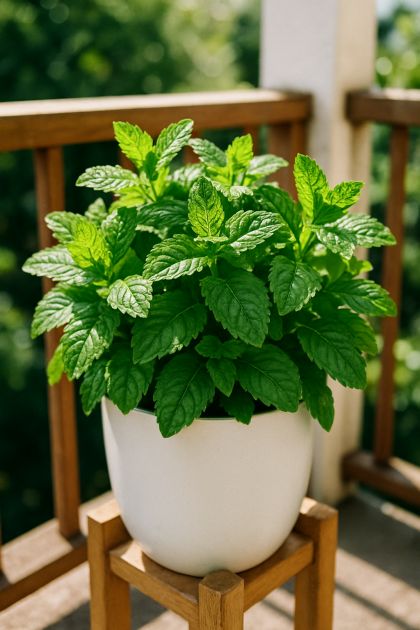Mint is a versatile and aromatic herb that can be a delightful addition to your home garden, even if you’re limited to container gardening. Growing mint in a pot is not only practical but also allows you to control its growth, preventing it from overtaking your garden. With the right care and attention, you can cultivate a thriving mint plant that will provide you with a bountiful harvest of fresh leaves for culinary and medicinal uses.
In this step-by-step guide, we will walk you through the process of growing the largest mint plant possible in a pot. From selecting the right variety to ensuring optimal growing conditions, each step is designed to maximize your mint plant’s growth and health. Whether you’re a seasoned gardener or a beginner, this guide will equip you with the knowledge you need to succeed.
Advertisement
1. Choose the Right Mint Variety
Choosing the right variety of mint is crucial for successful growth in a pot. There are several types of mint, including spearmint, peppermint, and chocolate mint, each with its own unique flavor and growth characteristics. Spearmint (Mentha spicata) is a popular choice for its sweet, mild flavor and vigorous growth. Peppermint (Mentha × piperita) is known for its strong, menthol flavor and is often used in teas and desserts. Chocolate mint (Mentha × piperita ‘Chocolate’) offers a hint of chocolate aroma and is a fun variety to grow.
When selecting a variety, consider your intended use and personal preference. Also, consider the growth habit of the variety; some mints are more aggressive than others and may require more frequent pruning to keep them manageable in a pot.
2. Select the Perfect Pot
The pot you choose for your mint plant should be at least 12 inches in diameter and 12 inches deep to allow ample space for root growth. Mint has a tendency to spread, so a larger pot will help contain its growth while providing enough room for the roots to expand. Ensure the pot has drainage holes at the bottom to prevent waterlogging, which can lead to root rot.
Material is also important; terracotta pots are a great choice as they are porous and allow for better air circulation around the roots. However, they can dry out quickly, so you may need to water more frequently. Plastic pots retain moisture better but may not provide as much aeration. Choose a pot that suits your watering habits and aesthetic preferences.
continued on next page
ADVERTISEMENT

